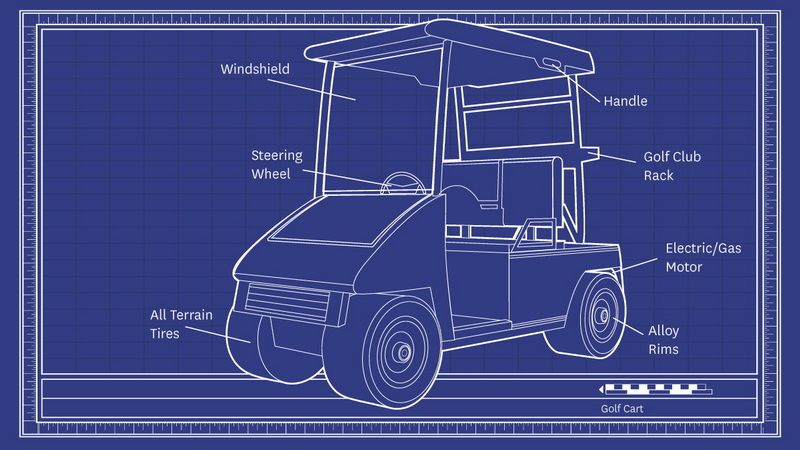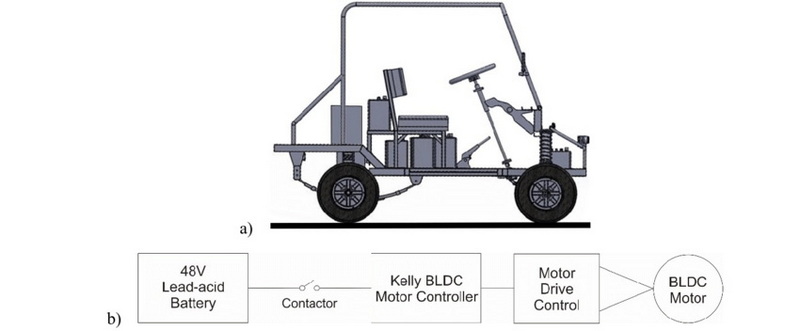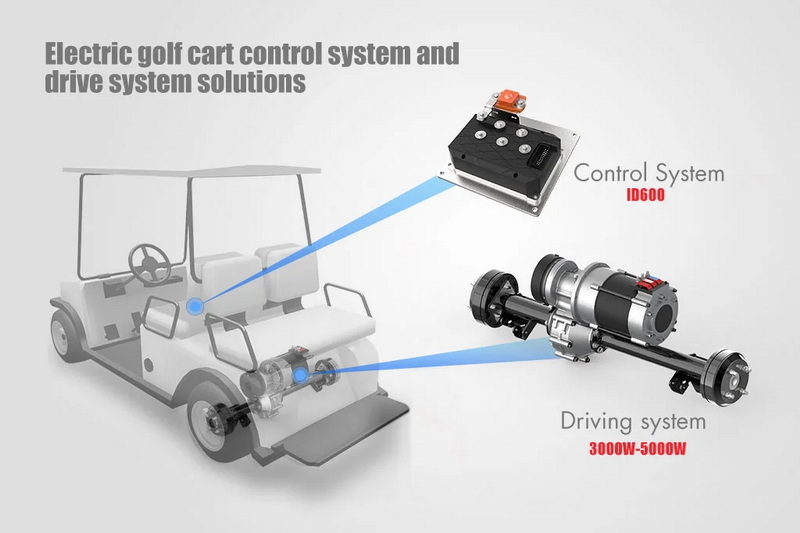Content Menu
● What is an Electric Golf Cart?
● Key Components of an Electric Golf Cart
● How Electric Golf Carts Operate
● Types of Electric Golf Cart Motors
● Battery Technology
● Charging an Electric Golf Cart
● Advantages of Electric Golf Carts
● Disadvantages of Electric Golf Carts
● Regenerative Braking System Explained
● Maintenance Tips for Electric Golf Carts
● Conclusion
● FAQ
>> 1. How long does it take to charge an electric golf cart?
>> 2. What type of battery is best for an electric golf cart?
>> 3. Can I upgrade my electric golf cart's motor?
>> 4. How fast can an electric golf cart go?
>> 5. Is it safe to drive an electric golf cart on public roads?
Electric golf carts have become increasingly popular on golf courses and in residential communities due to their eco-friendliness, quiet operation, and ease of use. Understanding how these vehicles function can enhance your experience as a user or owner. In this article, we will explore the intricate workings of electric golf carts, their components, and the technology that powers them.

What is an Electric Golf Cart?
An electric golf cart is a compact vehicle designed primarily for transporting golfers and their equipment around a golf course. Unlike gas-powered carts, electric models rely on batteries as their power source. This makes them an environmentally friendly option, producing zero emissions and offering a quieter ride.
Key Components of an Electric Golf Cart
To comprehend how electric golf carts operate, it's essential to understand their main components:
- Electric Motor: The heart of the cart, converting electrical energy into mechanical energy to propel the vehicle.
- Battery Pack: Stores electrical energy; typically made up of deep-cycle lead-acid or lithium-ion batteries.
- Controller: Acts as the brain of the cart, regulating power flow from the batteries to the motor based on input from the accelerator pedal.
- Accelerator Pedal: Controls the speed of the cart by sending signals to the controller.
- Braking System: Often includes regenerative braking that recovers energy during deceleration.
- Chassis: Provides structural integrity and support for all components.
How Electric Golf Carts Operate
The operation of an electric golf cart can be broken down into several steps:
1. Power Supply: When you turn on the cart, electrical energy flows from the battery pack to the motor.
2. Motor Functionality: The electric motor converts this electrical energy into mechanical energy through electromagnetic principles. This process involves interaction between coils, magnets, and a rotor within the motor.
3. Movement: The spinning rotor is connected to the wheels via a powertrain system that includes gears and belts. As it spins, it generates torque that moves the wheels forward or backward.
4. Speed Control: The accelerator pedal sends a signal to the controller, which adjusts the power sent to the motor. This allows for smooth acceleration and deceleration.
5. Braking System: When brakes are applied, regenerative braking captures kinetic energy and converts it back into electrical energy, recharging the batteries in the process.

Types of Electric Golf Cart Motors
Electric golf carts typically utilize two types of motors:
- DC Motors (Direct Current): Common in traditional models, these motors are reliable and easy to maintain.
- AC Motors (Alternating Current): Gaining popularity in modern carts due to their efficiency and performance in various conditions.
Battery Technology
The choice of battery significantly affects an electric golf cart's performance:
- Lead-Acid Batteries: Historically used due to their affordability but require regular maintenance and have a shorter lifespan.
- Lithium-Ion Batteries: More expensive but offer longer life, lighter weight, and require less maintenance. They are becoming increasingly common in newer models.
Charging an Electric Golf Cart
Charging an electric golf cart is straightforward:
- Connect the charger to a standard outlet.
- Most carts require overnight charging to ensure they are ready for use.
Regular maintenance checks on battery health can prolong their lifespan and ensure optimal performance.
Advantages of Electric Golf Carts
Electric golf carts offer numerous benefits over their gas-powered counterparts:
- Eco-Friendly: Zero emissions contribute to a cleaner environment.
- Quiet Operation: Reduced noise levels enhance the golfing experience.
- Lower Operating Costs: Electricity is generally cheaper than gasoline, leading to reduced running costs.
- Less Maintenance: Fewer moving parts mean less wear and tear compared to gas engines.

Disadvantages of Electric Golf Carts
Despite their advantages, electric golf carts also have some drawbacks:
- Limited Range: Depending on battery capacity, they may not cover as much distance as gas-powered models before needing a recharge.
- Charging Time: Requires time to recharge compared to refueling a gas cart.
Regenerative Braking System Explained
One of the standout features of modern electric golf carts is regenerative braking. This system allows for energy recovery during braking:
1. When brakes are applied, the electric motor switches roles from providing power to acting as a generator.
2. The kinetic energy generated during deceleration is converted back into electrical energy.
3. This energy is then sent back to recharge the battery pack, enhancing overall efficiency.
Maintenance Tips for Electric Golf Carts
To ensure longevity and optimal performance of your electric golf cart:
- Regularly check battery water levels (for lead-acid batteries).
- Keep connections clean and free from corrosion.
- Inspect tires for proper inflation and wear.
- Schedule periodic professional maintenance checks for motor and controller systems.
Conclusion
Understanding how electric golf carts work can greatly enhance your appreciation for this innovative mode of transport. From their eco-friendly operation to advanced technologies like regenerative braking, these vehicles represent a significant advancement in sustainable mobility. Whether you use them for golfing or other recreational activities, knowing their mechanics can help you make informed decisions about maintenance and usage.

FAQ
1. How long does it take to charge an electric golf cart?
Charging an electric golf cart typically takes 6 to 8 hours overnight for a full charge.
2. What type of battery is best for an electric golf cart?
Lithium-ion batteries are preferred for their longevity and low maintenance compared to traditional lead-acid batteries.
3. Can I upgrade my electric golf cart's motor?
Yes, many electric golf carts allow for motor upgrades depending on compatibility with existing components.
4. How fast can an electric golf cart go?
Most electric golf carts have a top speed between 12 to 20 mph, depending on model specifications.
5. Is it safe to drive an electric golf cart on public roads?
In many regions, electric golf carts can be street legal if they meet specific safety standards; always check local regulations before driving on public roads.











































